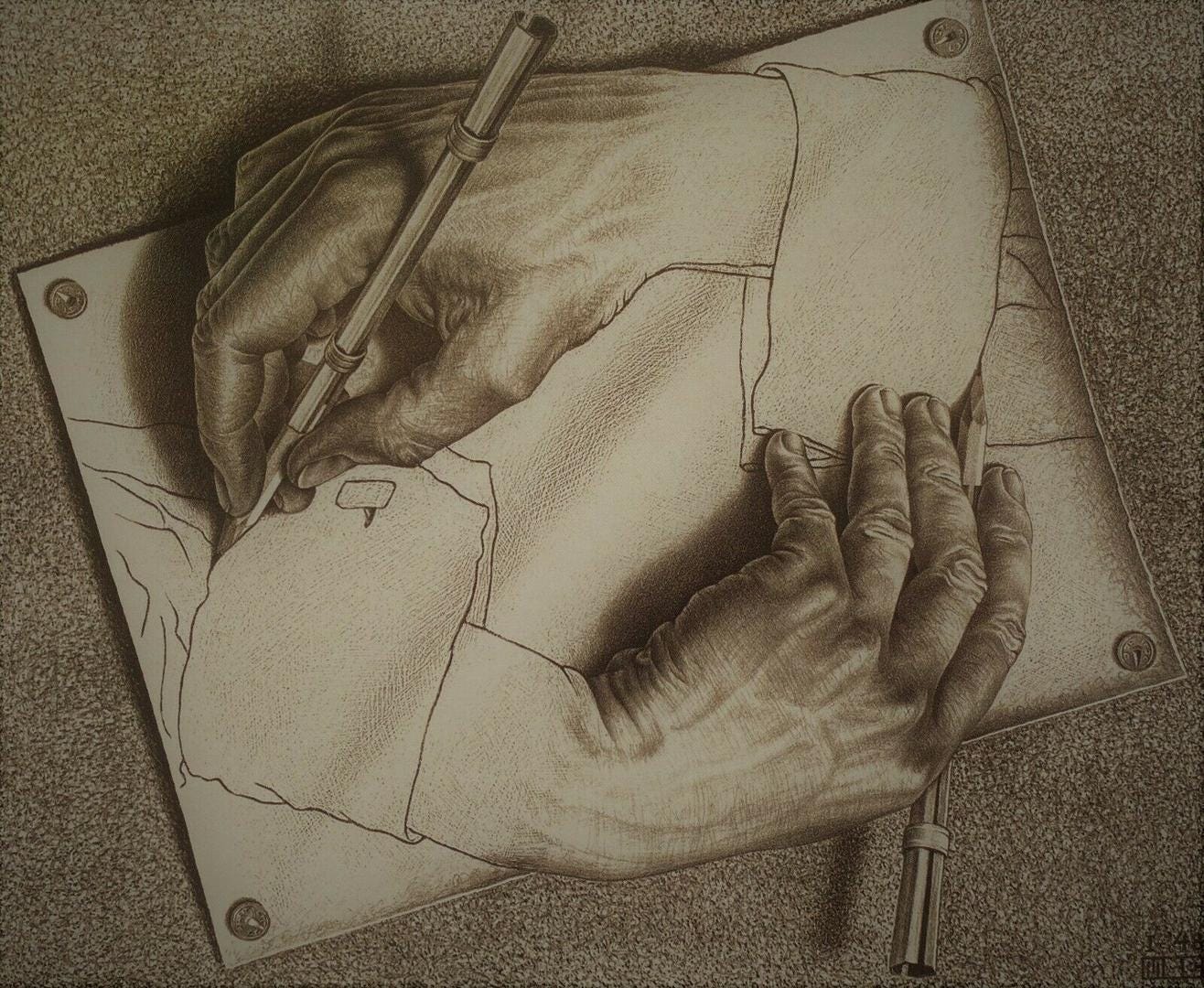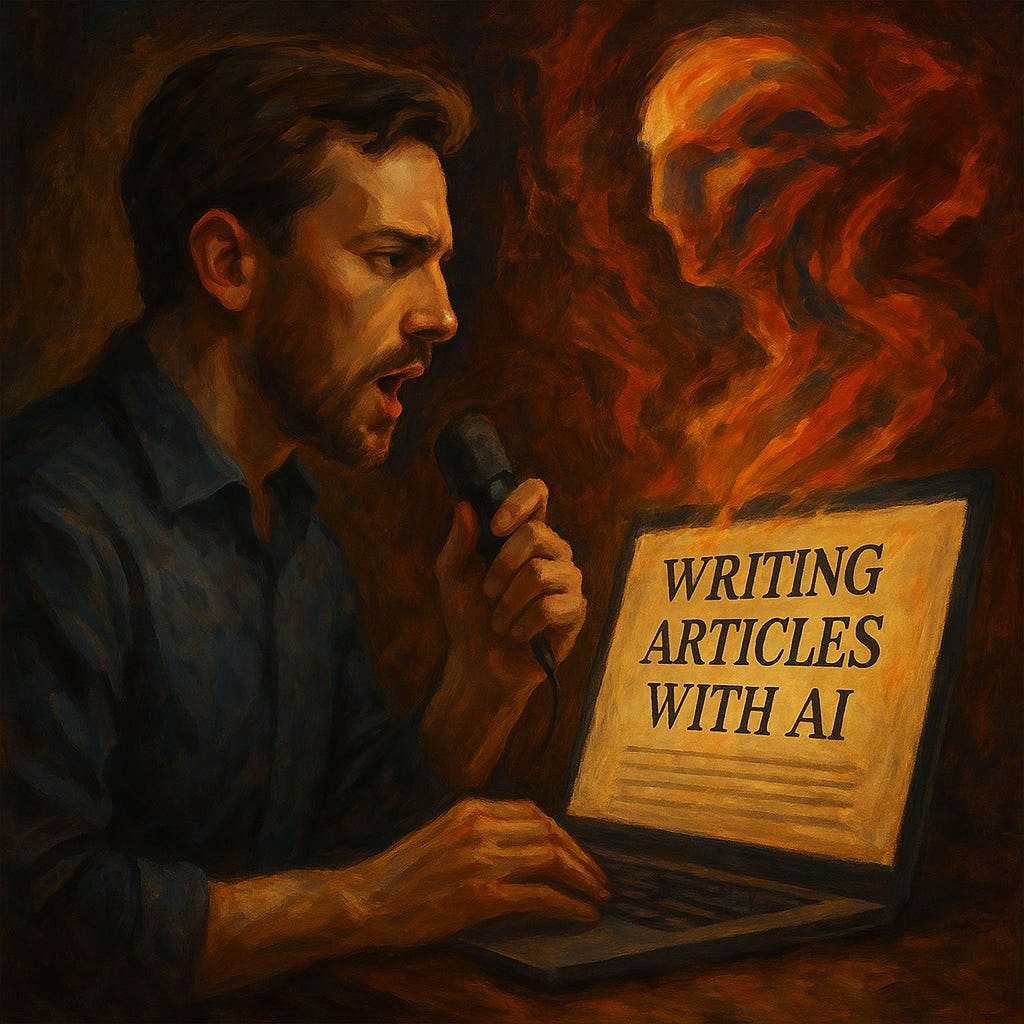This article is an artifact of itself.
I dictate thoughts aloud—somewhat meandering, partly structured, often exploratory—letting AI capture, organize, and respond. I edit the text later. Probably trim and rework between 20 to 70 percent of the writing, depending on time, alignment, and inspiration. But I like to start with my voice and a thought, raw, unfiltered, exploratory.
The thoughts become transcripts. The transcripts become prompts. The prompts become conversation. The conversation becomes an article.
That’s the process.
Or at least, one of them.
From Dictation to Draft
Do you like to think aloud? I think out loud a lot, with and without recording.
It might be while walking, driving, sitting at my desk, or reflecting in the corner of my office. I speak. Words are captured; a transcription tool converts it to text—then we can feed it to a GPT.
What we want the GPT to return is a structure, a mirror of raw thought. A structured recapitulation. A way to read what I said as if through a microscope and a macroscope, one capable of thinking and engaging with the spirit of poetic reflection.
I don’t ask it for a final article up front. I ask it to engage, expand, explore, expound and especially to reflect. Once the idea takes form through sufficient interaction—the rhythms of my thoughts feel sufficiently re-represented—do I begin to ask for a structured piece.
That’s when the writing begins.
AI Is a Partner, and a Pen
When I ask for an article, the AI will try to oblige. Sometimes it gets close. Other times, it misses the tone or overreaches in its summaries. It keeps getting better. I know it can never exactly be me—because how could it be?
Even though I’ve shaped it with custom instructions, built memory into it, refined its voice and prompts, it’s still outside my brain. Text doesn’t capture what I emphasized while speaking. It doesn’t catch the nuance of a pause or the spark of realization when an idea clicks. But it gets close. Closer than anything I’ve used before.
And that’s enough.
Because I don’t want a ghostwriter. I want a partner. I want a surface to think against.
Iteration as Medium
The editing phase is where I regain authorship.
I gut entire sections.
I reshape a few words.
I delete tangents.
Those lovely, wild tangents that felt so important when I said them but just don’t serve the final arc.
Knowing that not all exploration needs to make the cut. Writing this way is more archaeological than architectural. You dig. Then you decide what to preserve and what to leave buried.
The AI helps with the digging. I decide which artifacts to display.
It’s harder to write a pithy article, it takes longer, more thought, more iteration.
New Medium, New Mind
What’s most interesting to me is how this—this layered, iterative, spoken-written-interactive process—is a medium that’s never existed before.
Not speech. Not text. Not dictation in the old-fashioned sense. But a new hybrid.
Where you dictate not to produce finished writing, but to stimulate a thinking partner.
Where transcription is not the endpoint, but a bridge to reflection.
Where structure emerges after the thought, not before it.
Where AI responds with essays, and you treat them like clay—shaping, questioning, rearranging until something solid appears.
And this doesn’t even touch on the image generation, which I now pepper throughout my articles. It’s a strange and delightful thing to say, “Give me an image for this section,” and receive something—often imperfect, often intriguing—that helps me see the writing in a different light. These images are not illustrations. They’re interruptions. Attention-guides. Markers in the flow of cognition.
From Medium to Meta
So, yes: this is an article about how I write articles.
But more than that, it’s an example of a recursive process: using the medium to explain the medium, co-authoring with a machine while reflecting on what that co-authorship means.
Last week, I wrote a complementary piece—a sibling to this one—on the broader landscape of mediums.
This article is about how voice, transcription, AI, editing, and feedback loops combine to form a new kind of interface for thought. One that lets ideas emerge before they are judged. One that helps writers, thinkers like me think more clearly, by giving voice to both chaos and clarity. One we don’t know the results of yet.
Final Reflections
This medium asks something different of us. Not just to write, but to converse. Not just to finish, but to co-create. To tolerate the blur between drafting and dialogue, between speaking and shaping, between author and assistant.
It’s not always efficient. But it is generative.
And it makes me wonder:
What happens when we stop thinking of writing as a solitary act—and instead treat it as a conversation?







